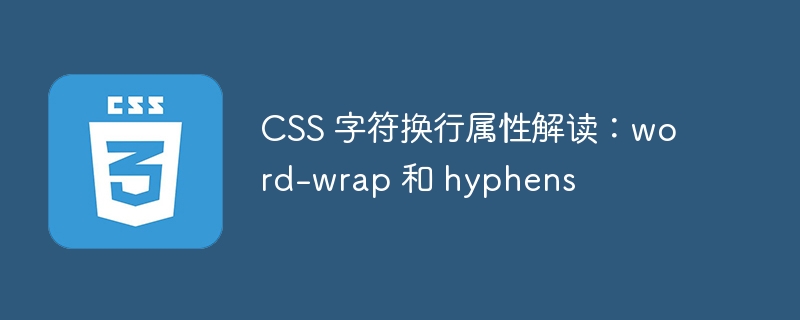

Interpretation of CSS character wrap properties: word-wrap and hyphens, specific code examples are required
In front-end development, the problem of text wrapping is a common challenge. When the length of the text exceeds the width of the container, we need to find a way to control the wrapping of the text to ensure that the overall layout is beautiful and adapts to different screen sizes. CSS provides a variety of ways to handle this problem, including the word-wrap and hyphens character wrapping properties.
The word-wrap attribute is used to control whether a continuous string (such as a long string of characters without spaces) is allowed to exceed the width of the container. Automatic line wrapping. It has two commonly used values:
The following is a sample code using word-wrap:
.container {
width: 200px;
word-wrap: break-word;
}In the above code, we set the width of a container to 200px and set the word-wrap attribute to break-word. In this way, when the text content in the container exceeds 200px, the entire word will be automatically forced to be split into the next line.
The hyphens attribute is used to control whether word breaks are allowed when a word exceeds the width of the container, so as to better allocate space. It has three commonly used values:
The following is a sample code using hyphens:
.container {
width: 200px;
hyphens: auto;
}In the above code, we set the width of a container to 200px and set the hyphens attribute to auto. In this way, when the text content in the container exceeds 200px, the browser will automatically determine the position of hyphenation and line breaks based on the language and text content to better allocate space.
By using the two character wrapping properties of word-wrap and hyphens, we can more flexibly control the wrapping effect of text, making the page layout more beautiful and adaptable to different screen sizes.
To summarize, the character wrapping properties word-wrap and hyphens in CSS provide a flexible way to control the wrapping effect of text. They can help us solve the problem of line wrapping when the text exceeds the width of the container, thereby achieving better page layout effects. Through different value settings, we can choose the appropriate line wrapping method according to our needs. In actual development, we can choose which attribute to use according to the specific situation to achieve the best visual effect.
The above is the detailed content of Interpretation of CSS character wrapping properties: word-wrap and hyphens. For more information, please follow other related articles on the PHP Chinese website!